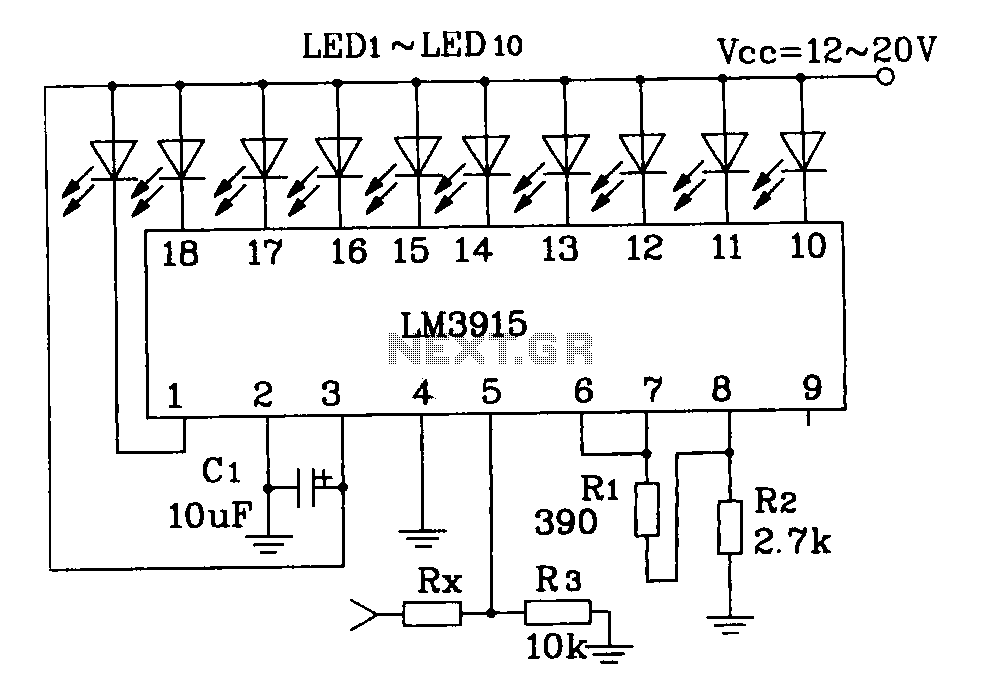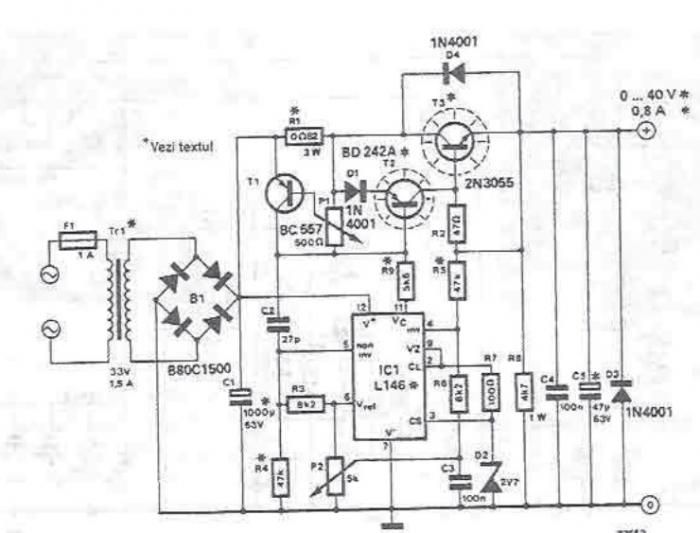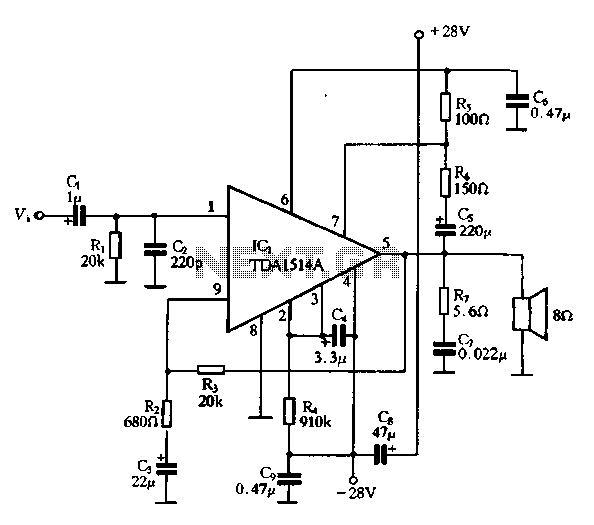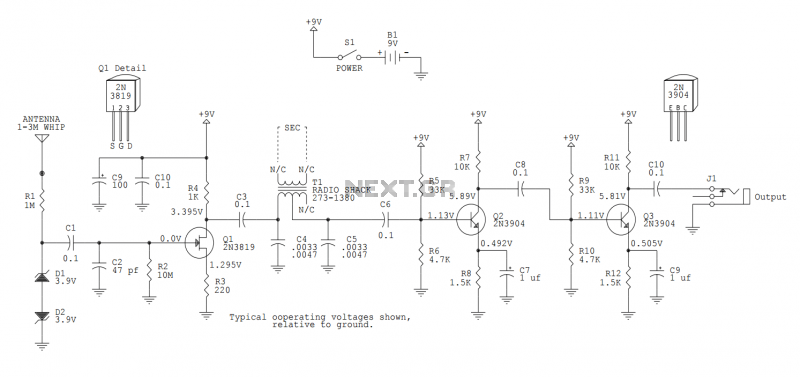
Constituting simple LM3915 audio power meter circuit

This document describes a simple LM3915 audio power meter circuit diagram. It notes that if the internal resistance of the speaker is 4 ohms, a resistor value of 10k ohms should be used for Rx. For an 8-ohm speaker, Rx should be 18k ohms, and for a 16-ohm speaker, Rx should be 30k ohms. Additionally, it mentions that a more sophisticated method for using this IC involves employing a half-wave AC signal converter to transform the AC input signal amplitude into a DC signal, which is then fed into the IC.
The LM3915 is a versatile LED bar graph/LED dot display driver that can be utilized to create an audio power meter. The circuit typically consists of the LM3915 IC, a set of LEDs for visual output, and resistors to set the input impedance based on the connected speaker's internal resistance.
For a 4-ohm speaker, the use of a 10k ohm resistor for Rx ensures that the circuit is appropriately calibrated to display the audio power accurately. When dealing with an 8-ohm speaker, increasing Rx to 18k ohms compensates for the higher resistance, maintaining the circuit's sensitivity and accuracy. Similarly, for a 16-ohm speaker, a 30k ohm resistor is necessary to ensure proper functionality.
The implementation of a half-wave AC signal converter is an advanced technique that enhances the performance of the audio power meter. This converter rectifies the AC signal, producing a DC signal that can be processed by the LM3915. By converting the AC input signal into a DC format, the circuit can provide a more stable and reliable output, allowing for precise visual representation of audio power levels.
In summary, the LM3915 audio power meter circuit can be effectively tailored to various speaker impedances by adjusting the resistor values. The addition of a half-wave AC signal converter further refines the circuit's performance, enabling it to accurately reflect audio power levels through a visual output.Constituting simple LM3915 audio power meter circuit diagram Note: If the internal resistance of 4 speaker when, Rx take 10k If the internal resistance 8 speaker when, Rx take 18k speaker if the internal resistance 16 when, Rx take 30k Levin show a use of such IC AC input signal amplitude more sophisticated method is to use a half-wave AC signal converter will be changed to a DC signal, and then the DC signal is then fed to the input of the IC.
The LM3915 is a versatile LED bar graph/LED dot display driver that can be utilized to create an audio power meter. The circuit typically consists of the LM3915 IC, a set of LEDs for visual output, and resistors to set the input impedance based on the connected speaker's internal resistance.
For a 4-ohm speaker, the use of a 10k ohm resistor for Rx ensures that the circuit is appropriately calibrated to display the audio power accurately. When dealing with an 8-ohm speaker, increasing Rx to 18k ohms compensates for the higher resistance, maintaining the circuit's sensitivity and accuracy. Similarly, for a 16-ohm speaker, a 30k ohm resistor is necessary to ensure proper functionality.
The implementation of a half-wave AC signal converter is an advanced technique that enhances the performance of the audio power meter. This converter rectifies the AC signal, producing a DC signal that can be processed by the LM3915. By converting the AC input signal into a DC format, the circuit can provide a more stable and reliable output, allowing for precise visual representation of audio power levels.
In summary, the LM3915 audio power meter circuit can be effectively tailored to various speaker impedances by adjusting the resistor values. The addition of a half-wave AC signal converter further refines the circuit's performance, enabling it to accurately reflect audio power levels through a visual output.Constituting simple LM3915 audio power meter circuit diagram Note: If the internal resistance of 4 speaker when, Rx take 10k If the internal resistance 8 speaker when, Rx take 18k speaker if the internal resistance 16 when, Rx take 30k Levin show a use of such IC AC input signal amplitude more sophisticated method is to use a half-wave AC signal converter will be changed to a DC signal, and then the DC signal is then fed to the input of the IC.





